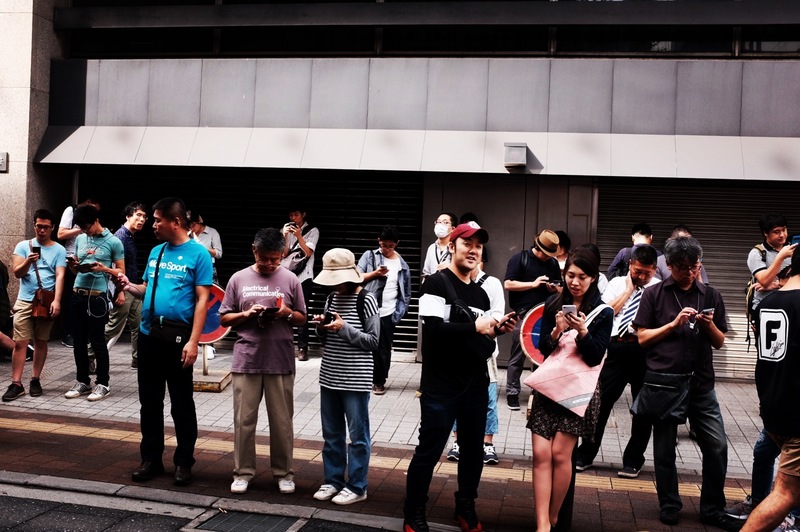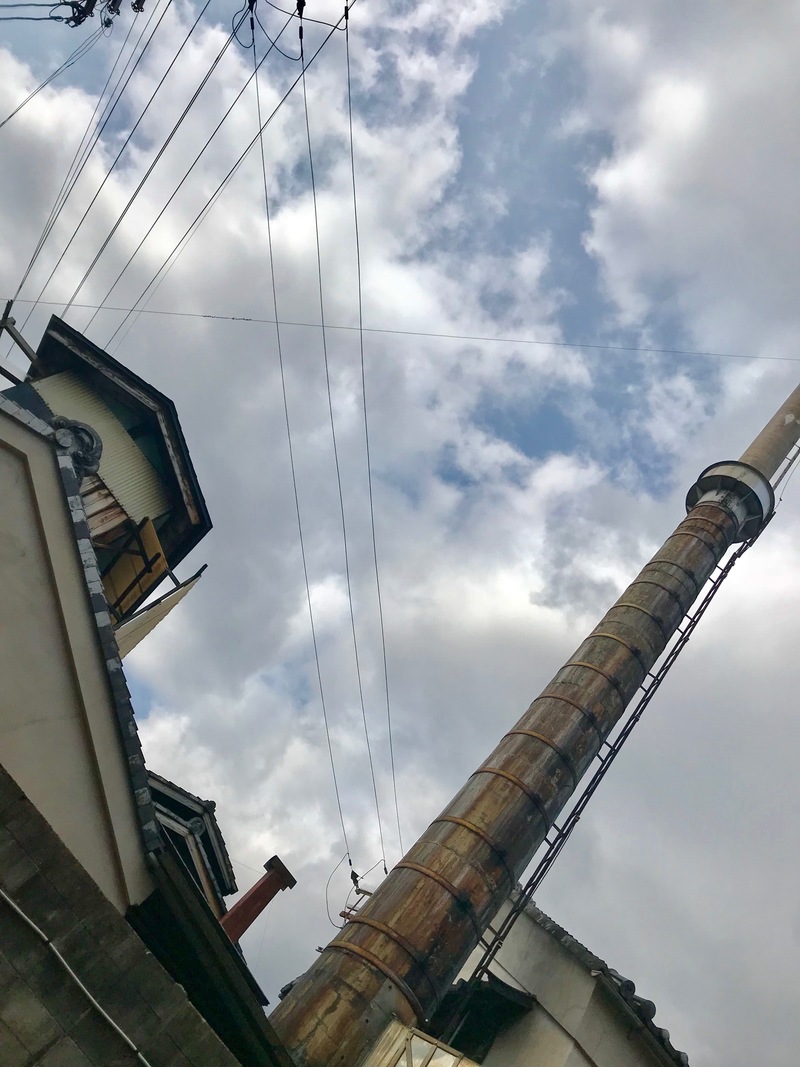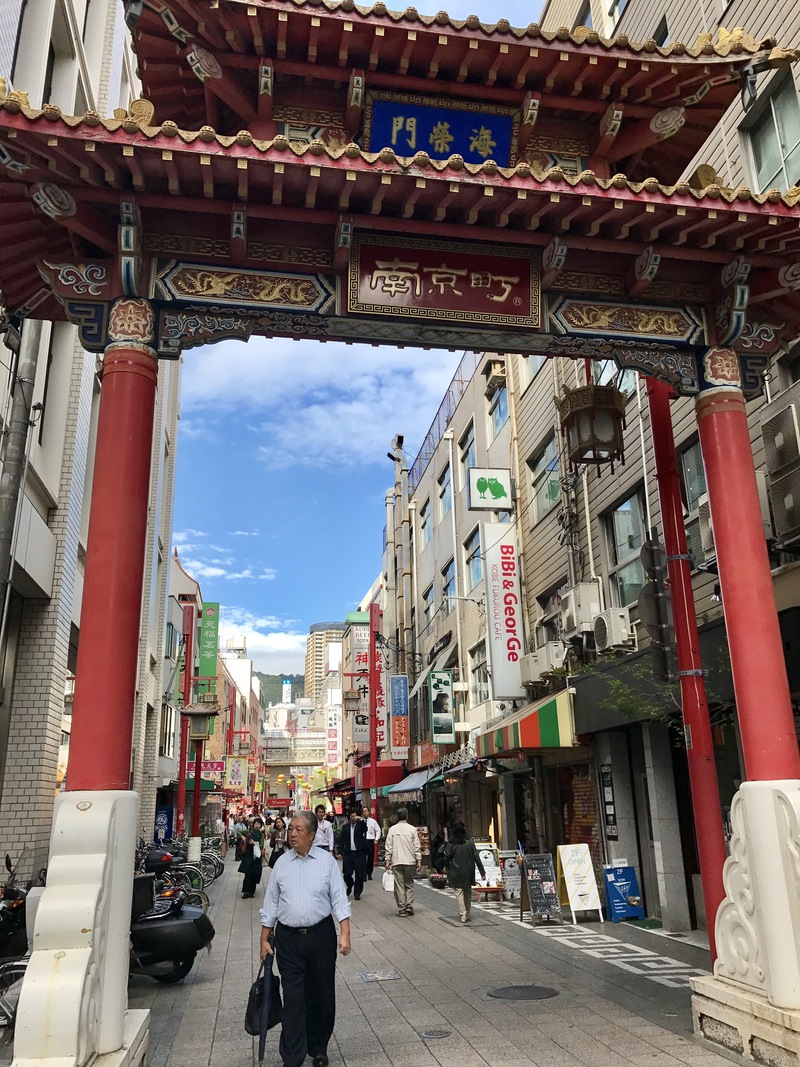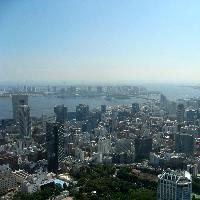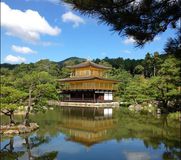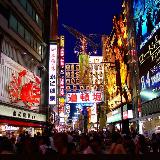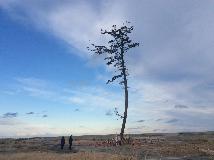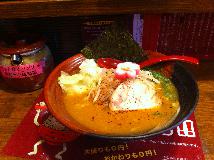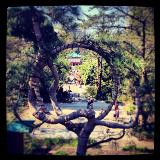Shin Sekai (literally New World in English) is a neighbourhood in Osaka. Originally developed during the 1910s as a modern, fashionable "Western" district, after WW2 the district fell into disrepute and became one of Japan's poorest neighbourhoods. Despite certain amounts of gentrification and the development of the area as a tourist destination, Shin Sekai remains today a relatively poorer district filled with cheap restaurants, counterfeit goods stores and pornographic theatres.

Tsutenkaku Tower rising up above Shin Sekai
Much like the shitamachi of Tokyo, Shin Sekai is thought of as presenting an "authentic" experience of working-class Osaka. In the following two recordings, one can hear enka (Japanese popular music inspired by folk music: a representative example can be listened to here). The district contains a maze of narrow shopping arcades (shotengai) which are filled with cheap restaurants specialising in mushi-yaki (fried snacks slightly similar but more earthy than tempura).
This first recording was taken in one of the shotengai containing mushi-yaki restaurants. Before entering the arcade, I stopped to listen to an elderly gentleman busking on his guitar whilst browsing through stalls selling cheap souvenirs. A bunch of other elderly men were sitting around listening to this guitar player approvingly. As I moved into the arcade, the old man's guitar faded away to be replaced by the muted hum of the many people eating in the restaurants and the sound of enka being played over loud speakers. As I went deeper into the arcade (where light became very scarce), a newer pop song began to play (you can hear it faintly about three quarters of the way through the recording). This, it turns out, was the theme song for Shin Sekai- a young girl singing about the district with nostalgia. Like most shotengai, as one walks through you can hear the calls of shop owners trying to attract your business.

Shops in Shin-sekai with Tsutenkaku tower in the background
Click to Play Sound: Shinsekai: Ambient sound 2
This second recording was taken out in the streets. You can hear a group of women laughing and chatting in a restaurant as I walk by. Immediately afterwards, one can hear a popular song being played over a loudspeaker in front of another mushi-yaki restaurant. The crowd is noisier in this part of Shin Sekai, and you can hear them as they mill around the narrow streets. At around the 20 second mark, you can hear a young man advertising mushi-yaki ("mushi yaki douzo? How about some mushi-yaki?"). At about the half-way mark, I pass in front of a Korean Pop Music store, possibly run by resident Koreans (zainichi kankokujin), many of whom live in the district- the electro-pop is juxtaposed with the enka and acoustic pop common in the area. At the end of the recording, I accidentally walked through a group of young people having a conversation.
Recordings: Thomas Baudinette
Photo: MShades and titanium22 used under Creative Commons license from WikiCommons
